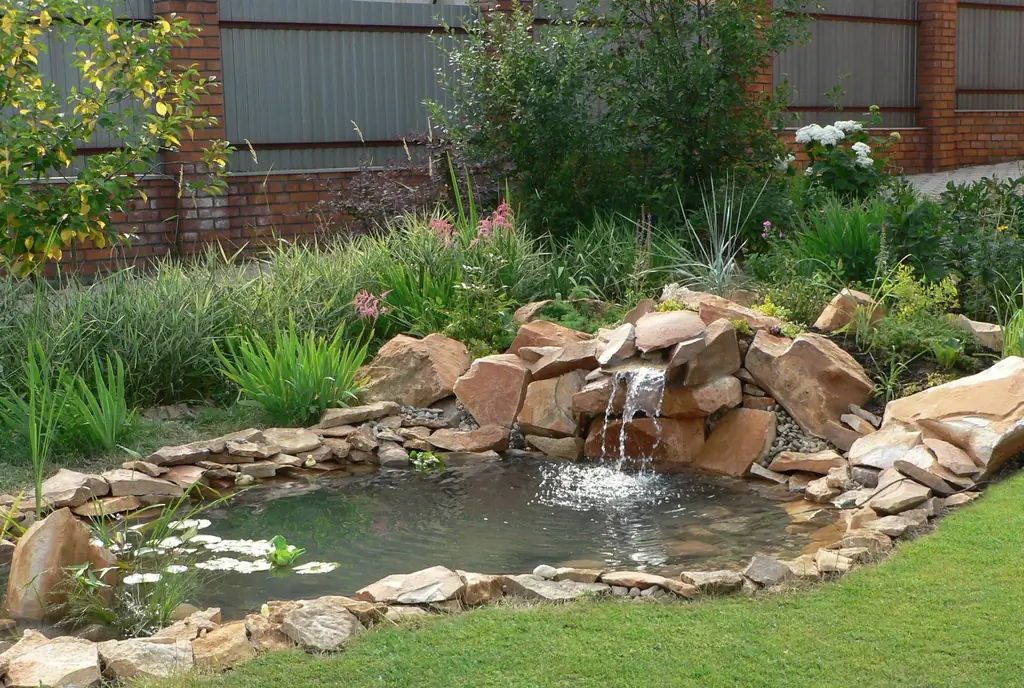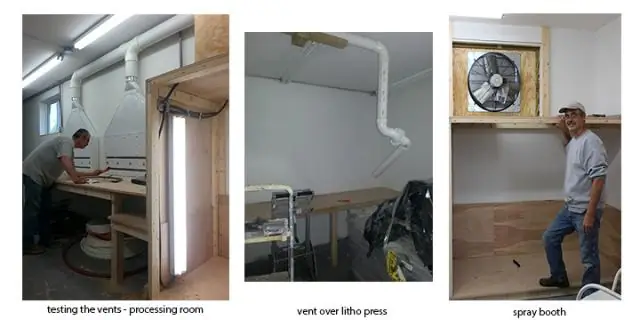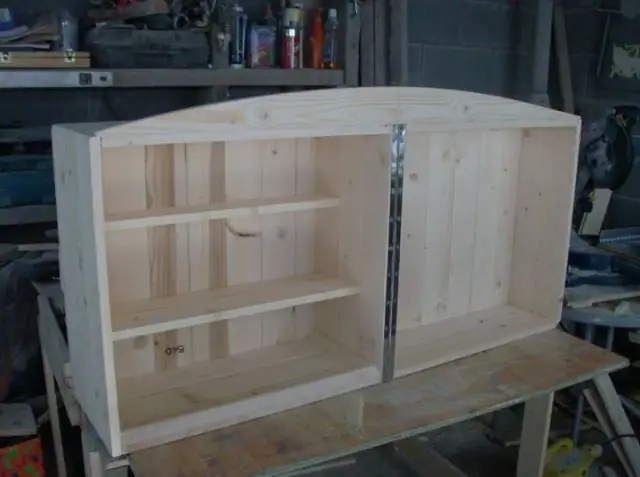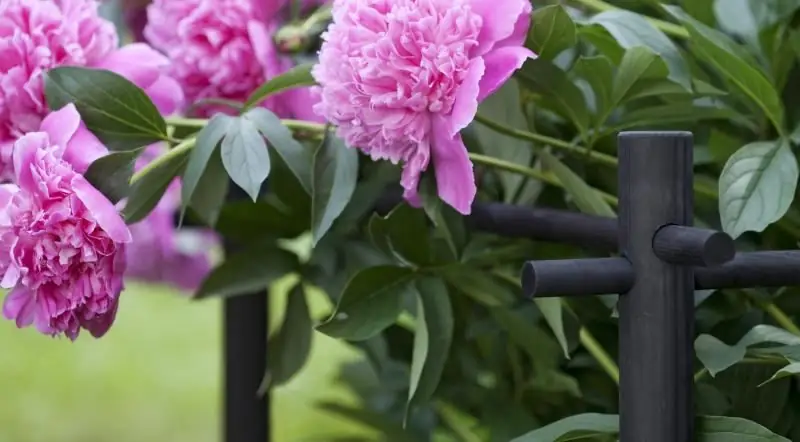
Table of contents:
- Do-it-yourself pond in the garden simply and quickly
- Where to start
- A variety of styles in which you can arrange a decorative reservoir
- How to properly position the pond and what materials to use
- Making a pond using waterproof film
- Old bathtub as a base for a garden pond
- Plants for decorating a decorative reservoir
- What mistakes are most often made during registration
- DIY video about creating a reservoir
- Author Bailey Albertson [email protected].
- Public 2023-12-17 12:53.
- Last modified 2025-01-23 12:41.
Do-it-yourself pond in the garden simply and quickly

As you know, contemplation of the environment can give us many pleasant moments, restore strength, calm down and give inspiration. Therefore, we rush from the noisy city streets to natural spaces or to the quiet comfort of our garden.
If you are the happy owner of your own site, then you probably decided long ago not to be limited only to the beds. A beautiful cozy garden, decorated with paths and benches, flower beds and arches, will be a real salvation for you. But a truly enjoyable garden for contemplation and relaxation will not be complete without a small reservoir.
Breaking a pond or lake in your garden is not difficult at all. Our tips will help you get the job done quickly and easily.
Content
- 1 Where to start
- 2 A variety of styles in which you can arrange a decorative reservoir
- 3 How to properly position the pond and what materials to use
- 4 Making a pond using waterproof film
- 5 Old bathtub as a base for a garden pond
- 6 Plants for decorating a decorative reservoir
- 7 What mistakes are most often made when designing
- 8 Video about creating a reservoir with your own hands
Where to start
If you have made the final decision to create a park reservoir on your site, then the following questions will be of top priority for you:
- how to position the reservoir so that it is in complete harmony with the landscape;
- what to do to make the pond last a long time and does not require special care.
We will help you choose the style of the reservoir, its location, and also tell you about the technology and equipment.
Traditionally, there are several classic styles for decorating decorative ponds in the garden.
- The eastern (Muslim courtyard) is characterized by many small pools and fountains of regular geometric shapes.
- The Chinese style is determined by the maximum closeness to the natural landscape, voluminous reservoirs with irregular bends of the banks and the use of bridges, lanterns, benches, stones and trees.
- The Japanese style assumes minimalism, therefore the reservoir is very small, but complemented by a stream flowing into it. The tradition of combining all the elements in a Japanese garden requires surrounding the pond with stones, small trees, and at the same time leaving the space open.
- European style is characterized by luxury and use of large spaces. In this case, ponds can be voluminous, they are surrounded by spacious flower beds and themed park ensembles. At the same time, the English direction is more reminiscent of the Chinese style, striving for natural lines, and the French one is characterized by clear lines and different levels.
In order to choose the best option for the style of the reservoir in your garden, take the architectural concept of the house and other buildings on the site as a starting point. You also need to pay attention to the layout of the garden. The bowl of the reservoir can be supplemented with a decorative waterfall or stream, and the coastline is decorated with plants and stones.

A small pond with natural outlines will always look great in any landscape. However, a reservoir with clear geometric shapes will not only emphasize the lines of nearby buildings, but will also be very easy to install. Therefore, if you plan to make a pond with your own hands and have never encountered such work, take on the second option. In his performance, you will be helped by many improvised means that have not been used in home improvement.
A variety of styles in which you can arrange a decorative reservoir







How to properly position the pond and what materials to use
It is very important to correctly position the reservoir so that it not only serves you for a long time, but also does not get silted up, and also does not annoy you with seasonal water bloom due to the activity of algae. Therefore, the pond should be located in a place shaded during a certain period of daylight hours, but not devoid of good lighting, which is important for plants.
For a small area, it is better to make a small pond. It will not take much of your time and money, and it will not take up the work space set aside for garden crops.

For a classic pond, the depth is divided into 3 levels:
- zone of coastal plants;
- shallow water zone where winter-hardy water lilies will be planted;
- a 150-180 cm depression for wintering fish, if you intend to breed them.
Among the materials used to create reservoirs, the most reliable is the base made of concrete. It is also the most expensive and demanding of efforts: reinforcement, formwork construction
Now more often they use less expensive, but at the same time a simple option - plastic containers. They can be of any shape. In addition, in this capacity you can use an old bathtub that you no longer need.
But the most convenient option, which will require the least cost from you, is laying the bottom of the reservoir with a moisture-resistant plastic film.
We'll take a closer look at these two simple and budgetary methods so that you can choose the most suitable one.
Making a pond using waterproof film
First of all, you need to make a scaled plan of the pond, which will indicate the dimensions of all levels. Also sketch out a sketch according to which you will decorate the reservoir. This will help you avoid mistakes in the process. It will not be superfluous to decide what will become the main focus of the entire composition of the reservoir, for example, wood, stone, sculpture.
- Outline the contour of the reservoir along the perimeter, while checking the uniformity of the level of the banks.
- Dig a pit to the depth of the coastal level. Mark the dive-in line to the next mark. After the second tier is ready, draw a line for the deepest part and take out the rest of the earth.
- When the pit is completely ready, measure all of its dimensions using a cord for this. Add about 50 cm on each side of the bowl for an allowance - this is necessary in order to calculate the required film dimensions.
- Line the bowl with plastic. It is advisable to lay a layer of geotextile under it at the bottom to avoid damage to the film by stones and rhizomes. Instead of this material, you can use roofing material, linoleum or well-compacted sand.
- Dig a trench around the edge of the pond, insert the edges of the film into it and backfill with gravel. This will secure the film securely. On top, place stone blocks or plastic pipes nailed to pegs to prevent the earth from shattering.
- Decorate the edge of the reservoir with natural stone, lay out the bottom with pebbles or rubble, arrange the boulders with which you decided to decorate the pond. Arrange your plants in plastic containers.
- Pour water into the prepared pond bowl. In order to avoid stagnation in the future, the reservoir can be supplied with a stream that will ensure regular circulation. The source of the stream must be placed above the surface level, and water will be supplied to it by a submersible pump.

Congratulations, your pond is ready!
Old bathtub as a base for a garden pond
The finished plastic mold is perfect as a base for a reservoir. But you don't have to buy it from the store if you have an old enamel bathtub
So, in addition to the bath itself, you will need the following materials and tools:
- 2 buckets of gravel for drainage;
- 50-70 kg of sand;
- shovel;
- bucket;
- wheelbarrow;
- a large saucepan without a bottom (it can be replaced with a sheet of tin measuring 70 X 60 cm;
- level meter and tape measure;
- board equal to the length of the bath.

- Mark the boundaries of the pond pit by setting pegs to fit the tub and pulling a string between them. Add about 20 cm to make a sand cushion.
- Remove the sod layer and dig a hole. Calculate the depth so that the edges of the tub are 5 cm above the ground, including a sand cushion. In the place where you plan to make the drain, you need to dig another hole about 60 cm deep and the same width.
- Place an old saucepan or rolled sheet of tin into the drain pit so that the edges are 25 cm above the ground level. Fill the funnel with gravel 20 cm above the bottom. Now spread a 20 cm layer of sand evenly over the bottom of the pit to level it. Take out the pan or sheet of tin.
- Place the tub in the pit with the drain hole over the gravel pad. In this case, you need to add sand between the ground and the walls of the bath, moistening with water. Pour water into the tub gradually to match the level of the sand. Check with a level meter for correct installation.
So, your reservoir is ready. At the edges, you can decorate it with stones, or plant moisture-loving plants using previously removed sod. Plants can also be placed inside the pond, right in the pots, or on the bottom of the tub itself if you cover it with sand and gravel.
Plants for decorating a decorative reservoir






What mistakes are most often made during registration
If you are doing this kind of work with your own hands for the first time, then you will not be able to avoid mistakes. They are especially often manifested in the creation of compositions for decorating a pond. Therefore, use some tips.
- Do not decorate the shores of the reservoir with stones of the same size - this gives a boring look. It is better to combine different sizes and colors with each other. Arrange stones unevenly, do not fill up the entire shore with them.
- Don't make the pond too deep or it will look like a stone bag. This form is inconvenient for decorating a reservoir with stones, plants, as well as for fish farming.
- Do not overuse plants in pots and containers. This option is convenient for quick and frequent design changes, but has a bad effect on the development and growth of plants. It is much better to cover the bottom of the pond with soil for planting. This will not contaminate the bottom and water in the pond, since it uses heavy clay-containing soil, which is well strengthened by plant roots.

DIY video about creating a reservoir
Small decorative reservoirs are gaining more and more popularity among gardeners and owners of country houses. We are happy to help you create such a cozy corner that will become a real decoration for your garden! If you have any questions about this topic, ask them in the comments. Share with our readers your experience in creating artificial decorative ponds. We wish you easy work and comfort in your home!
Recommended:
How To Make A Kite With Your Own Hands At Home: Options With Drawings And Sizes + Photos And Videos

DIY kite: the necessary materials, diagrams, drawings, manufacturing steps. How to make a kite of different shapes. Secrets of a Successful Launch
How To Make Garden Benches With Your Own Hands From Pallets, Pallets And Other Materials At Hand - Step By Step Instructions With Photos, Videos And Drawings

Do-it-yourself construction of classy garden benches from pallets, old chairs and other improvised materials: step-by-step instructions, drawings, photos, videos
How To Make A Slate Fence With Your Own Hands - Step By Step Instructions, Construction Options And Decorations With Photos And Videos

How to choose the right slate for your fence. How to make measurements and calculations. DIY step-by-step instructions for installing a slate fence
Fences For Garden Beds With Your Own Hands - How To Make A Fence For A Front Garden, Flower Garden Or Vegetable Garden, Step By Step Instructions With A Photo

Options for fences for a suburban area. Their pros and cons. How to install a holder for plastic bushes, a flower bed from bottles: step by step instructions. Video
How To Make A Bath Bomb With Your Own Hands: Simple Recipes With Photos And Videos, Design Options

How to make bath bombs: different recipes, including for children. Required ingredients and materials
